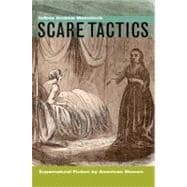
Note: Supplemental materials are not guaranteed with Rental or Used book purchases.
Purchase Benefits
What is included with this book?
| The Unacknowledged Tradition | p. 1 |
| The Ghost in the Parlor: Harriet Prescott Spofford, Harriet Beecher Stowe, Anna M. Hoyt, and Edith Wharton | p. 26 |
| Queer Haunting Spaces: Madeline Yale Wynne and Elia Wilkinson Peattie | p. 56 |
| Ghosts of Progress: Alice Cary, Mary Noailles Murfree, Mary Austin, and Edith Wharton | p. 82 |
| Familial Ghosts: Louise Stockton, Olivia Howard Dunbar, Edith Wharton, Josephine Daskam Bacon, Elia Wilkinson Peattie, Georgia Wood Pangborn, and Mary E. Wilkins Freeman | p. 105 |
| Ghosts of Desire: Rose Terry Cooke, Alice Brown, Elizabeth Stuart Phelps Ward, and Helen Hull | p. 136 |
| Ghostly Returns: Charlotte Perkins Gilman, Gertrude Atherton, and Josephine Daskam Bacon | p. 172 |
| Coda: The Decline of the American Female Gothic | p. 194 |
| Works Cited | p. 199 |
| Index | p. 219 |
| Table of Contents provided by Blackwell. All Rights Reserved. |
The New copy of this book will include any supplemental materials advertised. Please check the title of the book to determine if it should include any access cards, study guides, lab manuals, CDs, etc.
The Used, Rental and eBook copies of this book are not guaranteed to include any supplemental materials. Typically, only the book itself is included. This is true even if the title states it includes any access cards, study guides, lab manuals, CDs, etc.